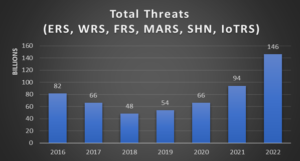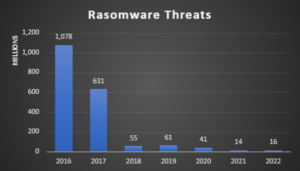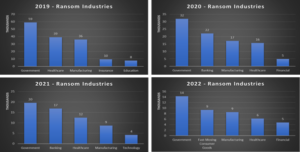Report points to growth of 55% in the volume of cyber threats, compared to the previous year, and is a record for surpassing the 2016 mark of 82 billion attacks
The annual report of Trend Micro, a world leader in cybersecurity solutions, reveals a worrying increase in the number of cyber threats, with the blocking of 146 billion attacks in 2022, which represents growth of 55% compared to the previous year, when 94.2 billion threats were registered.
The number is a record, surpassing the 2016 mark of 82 billion attacks. Although in the following years there was a drop in the volume of detections, which plummeted to 48 billion in 2018, the pandemic leveraged the action of cybercrime and can be considered largely responsible for this vertiginous increase, mainly due to the adoption of remote work that changed the threat landscape.

“Trend Micro has made a continual effort to expand attack surface protections, improving technologies and highlighting the increasing role of malicious actors, as well as reinforcing the need for enterprises to adopt multiple layers of protection to detect and block threats. potential," said Jon Clay, vice president of Threat Intelligence at Trend Micro.
Trend Micro's annual report reveals:
• Ransomware threats, which have moved from mass attacks to targeted attacks with the role of modern families;
• Continuous detections of malicious files, over the years, due to the increase in work-from-home configurations during the pandemic;
• Long-term perspective for high-end families like WRCY, Emotet and modern ransomware;
• Long-term perspective for specific sectors such as healthcare and similar.
ransomware
Ransomware attacks have shown a downward trend over the years, with a peak of more than 1 billion threats registered in 2016. From 2018 there was a change in the profile of attacks, falling to 55 million in that year, and increasing slightly to 61 million in 2019. The rates of this type of threat continued to fall in the following years, reaching 41 million in 2020 and 14 million in 2021. In 2022, there was a slight increase with a total record of 15.76 million attacks ransomware


Cesar Candido, managing director of Trend Micro Brazil
“Ransomware attacks are increasingly targeted and sophisticated. Companies need to stay ahead of criminals, adopting tools and implementing security practices that protect the digital environment. Security needs to be treated as an investment by all companies”, recommends Cesar Candido, CEO of Trend Micro Brasil.
In 2022, the segment hardest hit by ransomware was the Government. The healthcare area reached the second position, in 2019, with 39 million records, but in 2022 it lost strength, ending the year in fourth place. The banking sector was the second most targeted, in 2020 and 2021, with a total of 22 million and 17 million detections, respectively. Industry is another sector that has remained among the top 5, securing third place among the most attacked segments in 2019, 2020 and 2022.

]The CEO and BEC frauds (Business Email Compromise, i.e. via corporate email) have increased significantly in recent years. CEO fraud increased from 12.5 million in 2018 to 23.2 million in 2022, representing growth of 87%. BEC attempts rose from 54 million in 2018 to 253 million in 2022, a jump of 365%. These trends highlight the need for organizations to implement more robust security measures to protect themselves.

In 2022, the United States topped the list of countries most frequently attacked by CEO fraud attempts, followed by Australia, United Kingdom, Canada and New Zealand. It is worth noting that English-speaking countries continue to be the main target of this type of attack.
The “Fast Facts” report is released by Trend Micro's research team with monthly updates on the threat landscape, based on the Trend Micro Smart Protection Network (SPN) solution, which analyzes the data security infrastructure. In addition to SPN sensors, data collected also came from researchers at Trend Micro, the Zero Day Initiative (ZDI) team, the Threat Hunting teams, TippingPoint, Mobile Application Reputation Service (MARS), Smart Home Network (SHN ) and IoT Reputation services.
For more details on the report, go to ON HERE.













